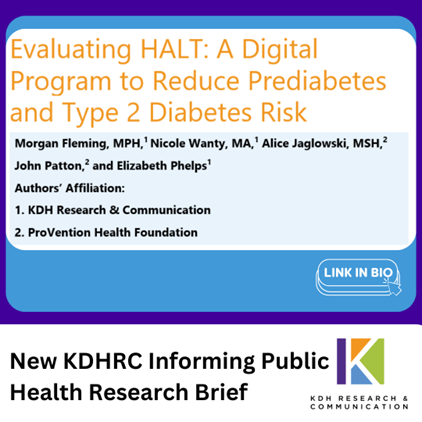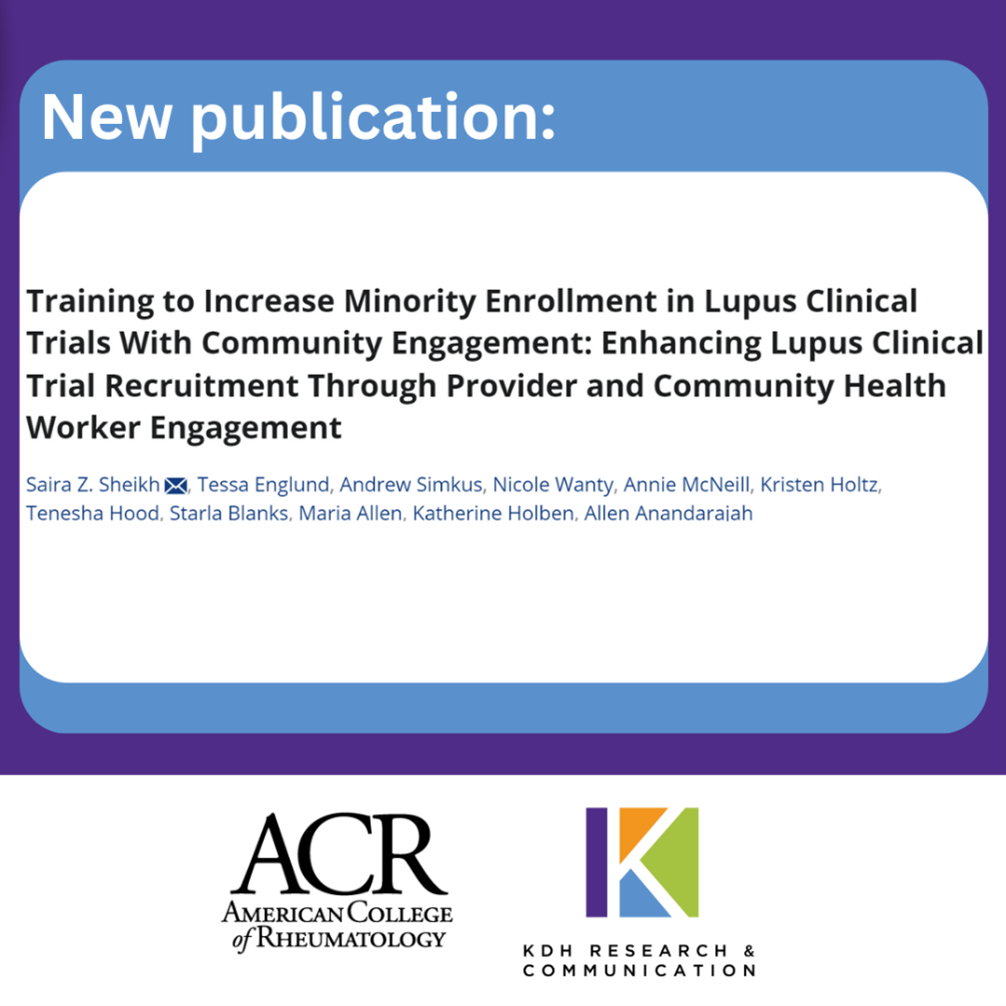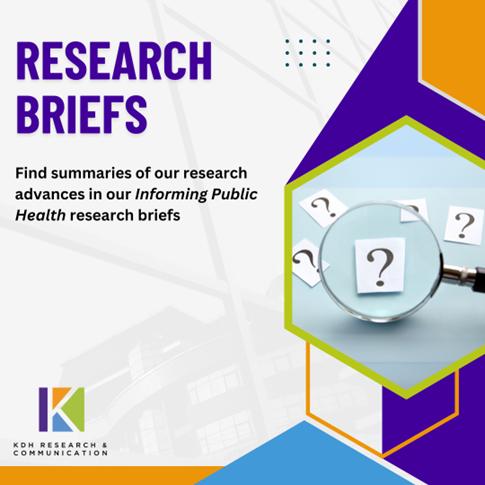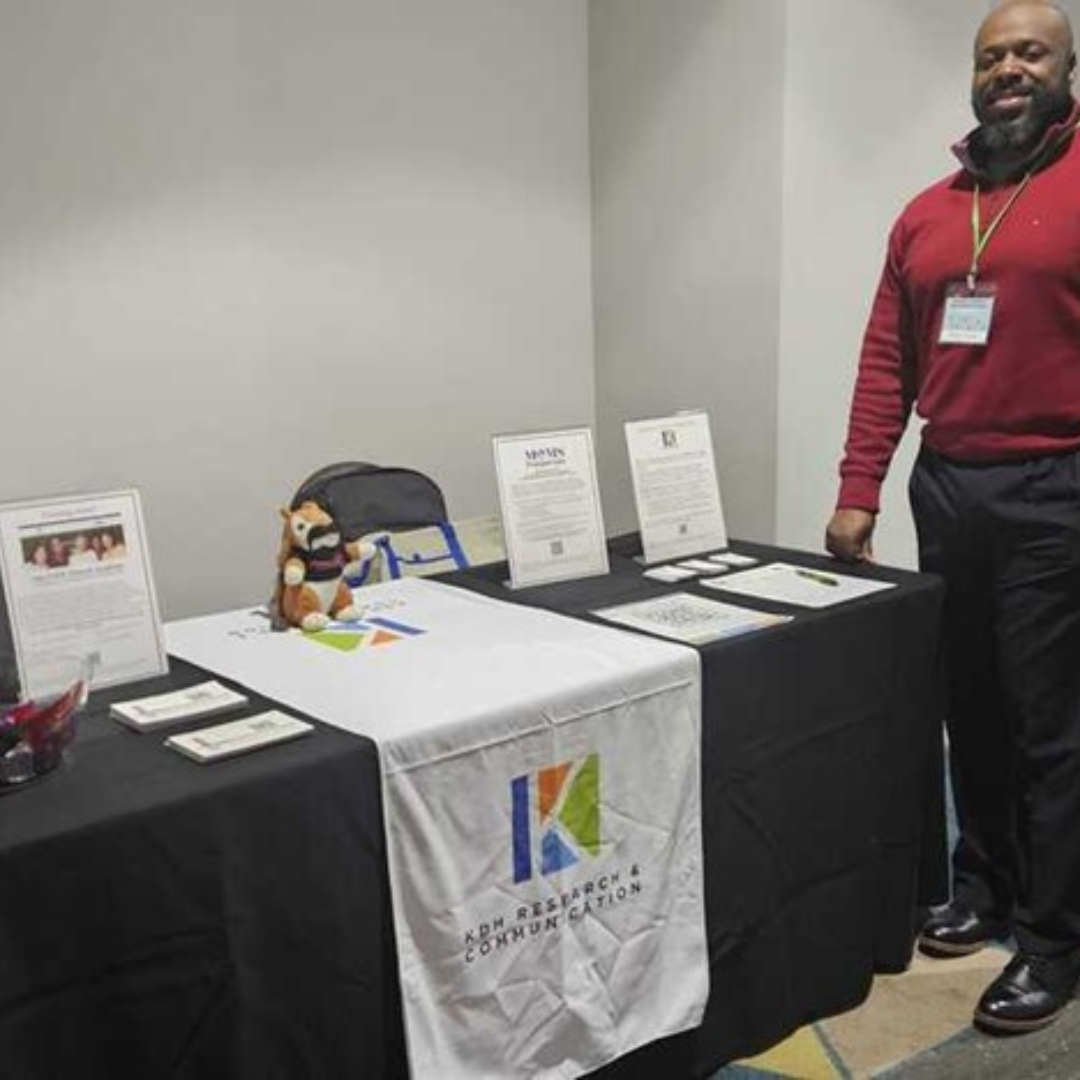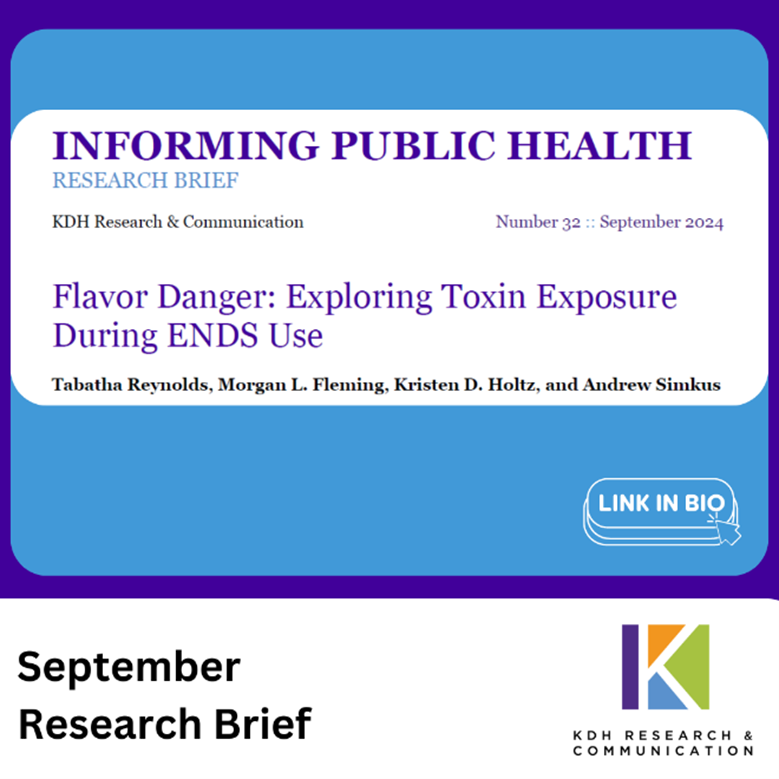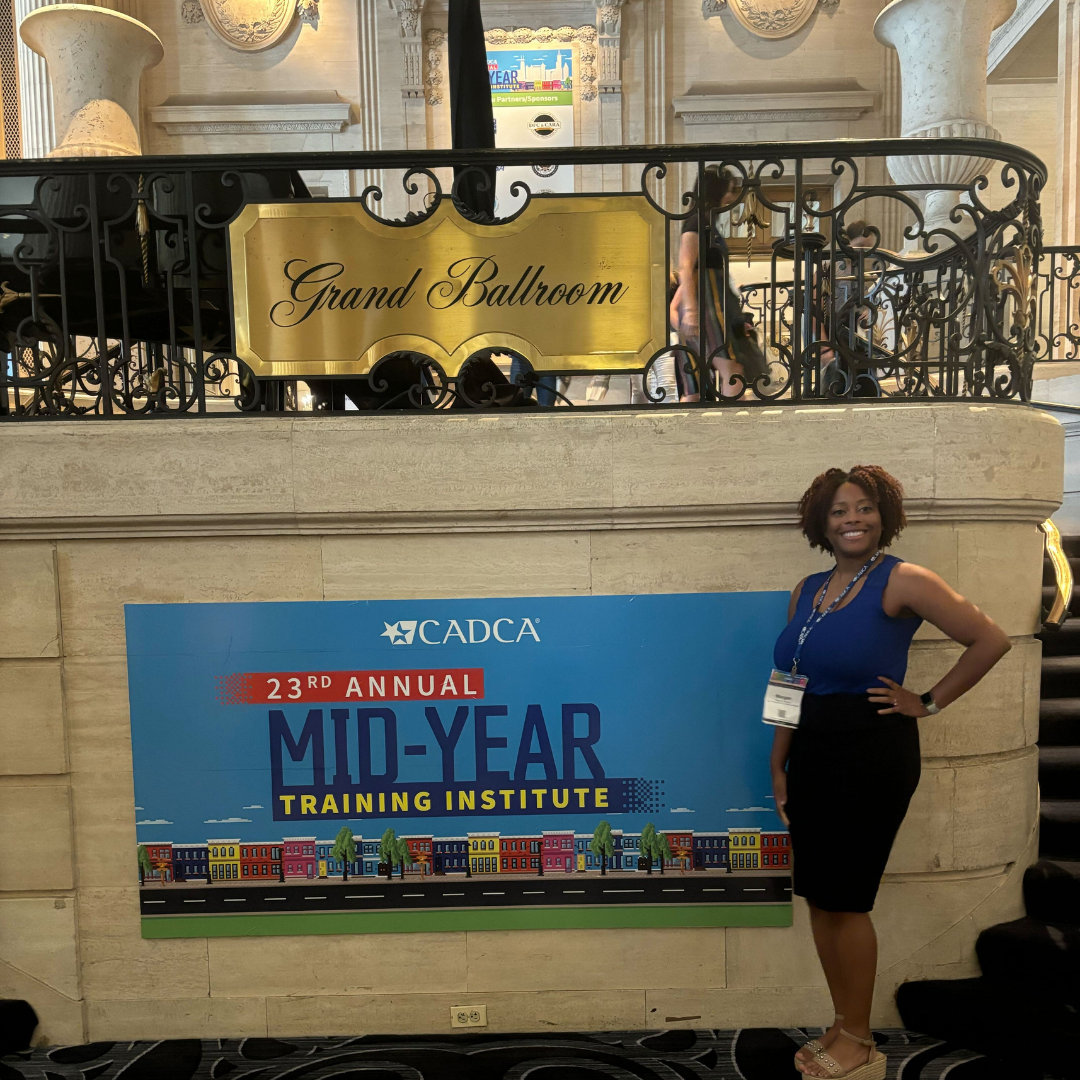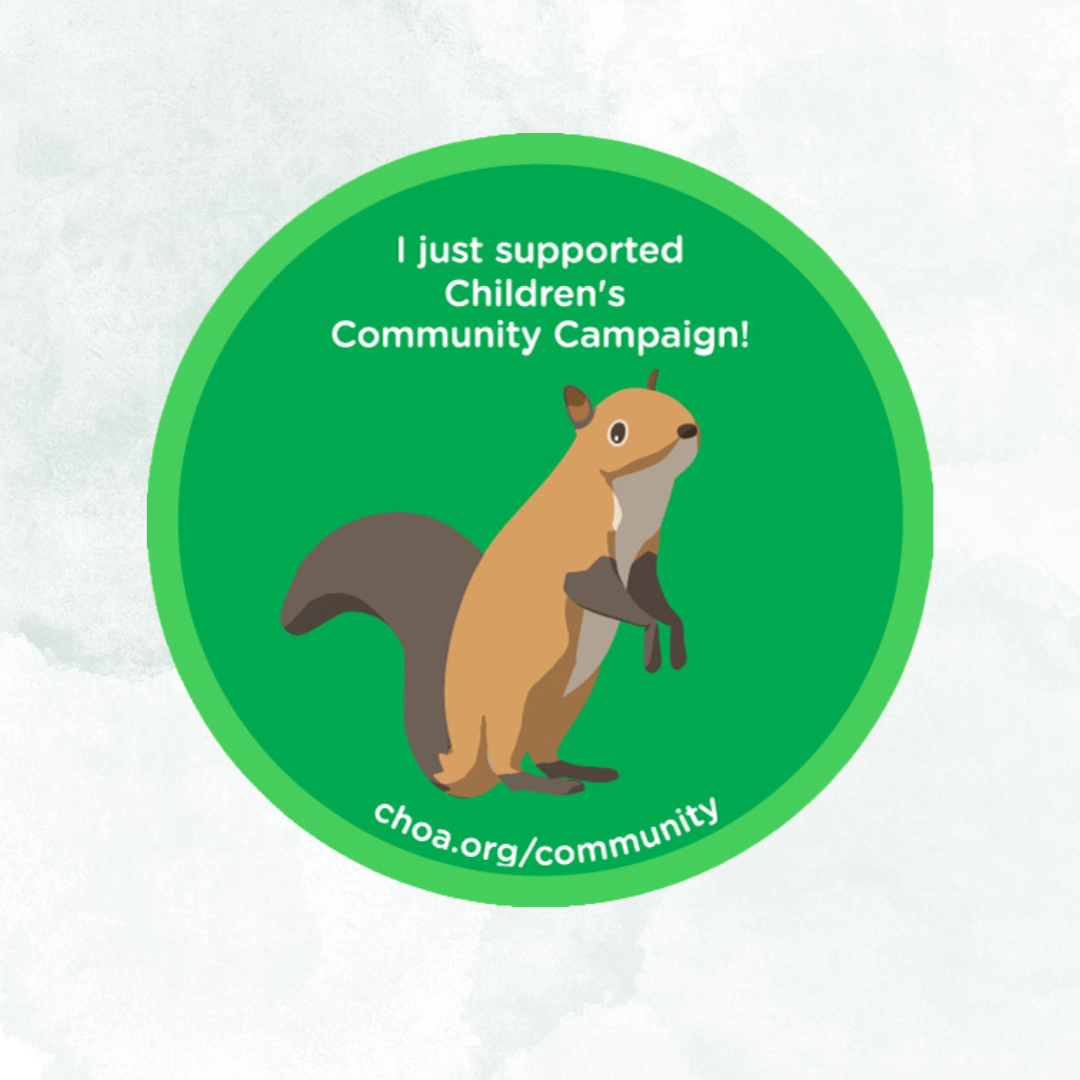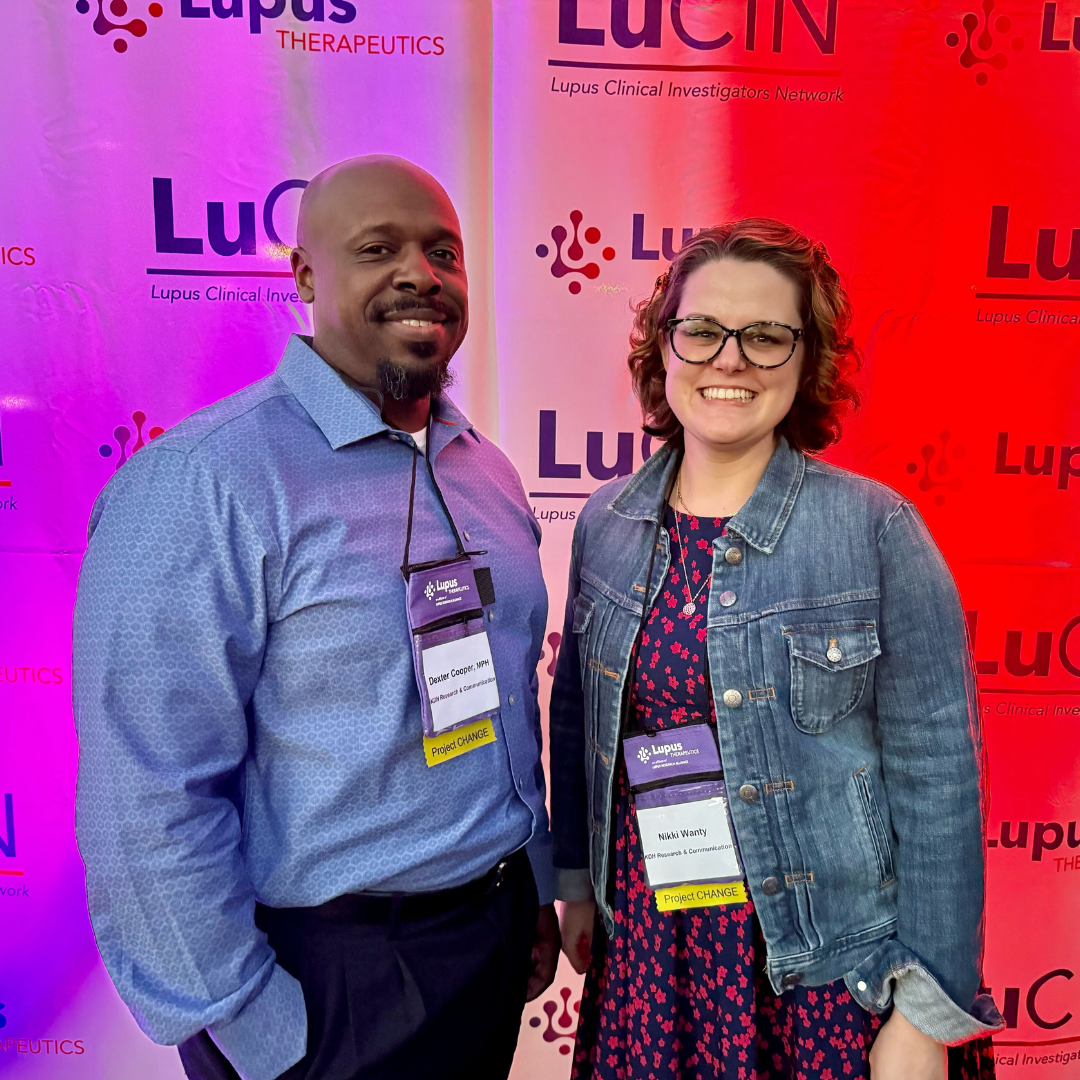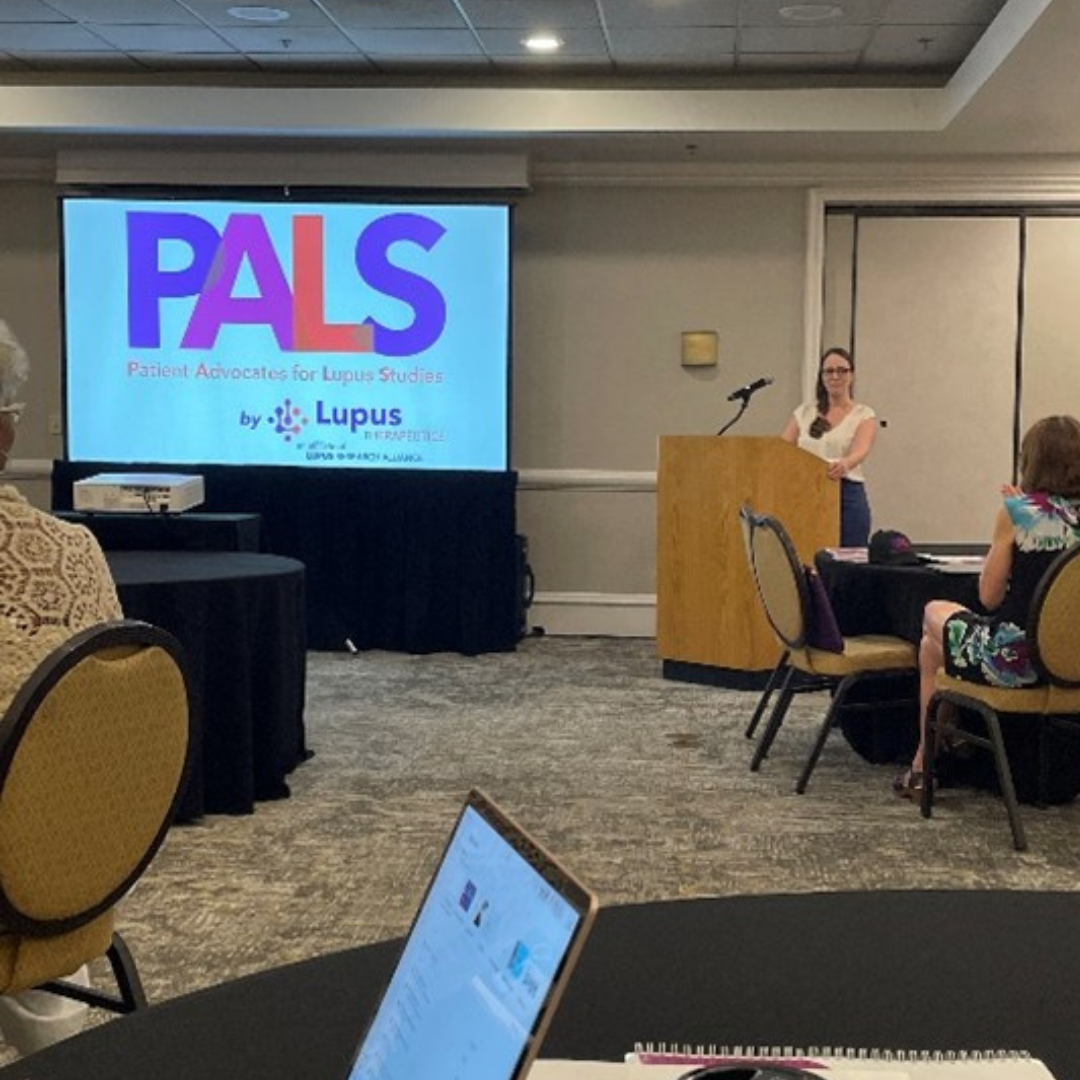Extra! Extra! Read all about us! From methodologies and milestones to deep thoughts and drivel, we do it all.
KDHRC has things to say. You can find our research in top journals,
leading conferences, and right here, in our Informing Public Health research briefs,
which summarize our research advances.
Morgan Fleming, MPH, Nicole Wanty, MAA, Alice Jaglowski, MSH, John Patton, and Elizabeth Phelps
In the United States, around thirty-six million people are predicted to meet the criteria for prediabetes by 2045. Prediabetes is a condition where blood sugar levels are higher than normal but not over the clinical threshold for type 2 diabetes diagnosis. Indeed, 1.2 million Americans are diagnosed with prediabetes and type 2 diabetes every year, resulting in substantial individual health risks. Prediabetes and type 2 diabetes decrease an individual’s life expectancy by two years and eight years, respectively. Further, both prediabetes and type 2 diabetes increase the risk of heart disease and stroke.
Tabatha Reynolds, Morgan L. Fleming, Kristen D. Holtz, and Andrew Simkus
Electronic nicotine delivery systems (ENDS) are the most popular tobacco product among adolescents, and flavors contribute to their popularity. Indeed, among youth who report ENDS use, 88% report using a flavored product. Research has well-established that flavors increase curiosity in ENDS initiation, facilitate easier use, and potentiate the addicting nature of ENDS. Youth are often attracted to using flavored vapes without knowing the severe health consequences.
Andrew Simkus, Kristen D. Holtz, Morgan L. Fleming, and Eric C. Twombly
Adolescent use of vapes remains a major public health concern, as 7.7% of middle and high school students reported vaping in 2023. To effectively curb vape use among adolescents, prevention messaging requires not only relevant information, but content that thoughtfully and accurately speaks to adolescents’ interests and concerns. Much prevention messaging for adolescents has centered around the potential health risks of vape use but vapes also have a substantial environmental impact. The production and improper disposal of vapes pollute the earth by introducing lithium, microplastics, and other contaminants into the environment.
Dexter L. Cooper; Andrew Simkus; Kristen D. Holtz; and Nicole I. Wanty
The number of caregivers without formal medical training is anticipated to continue growing across the United States (US), largely driven by the amount of baby boomers who require more assistance as they age. As the friends and family of older individuals respond to this growing need for these “informal” caregivers, they often find themselves taking on a new role with new responsibilities and stressors.
Andrew Simkus, Kristen D. Holtz, Eric C. Twombly, Nicole I. Wanty, and Morgan L. Fleming
As the COVID-19 pandemic surged in 2020, families suddenly faced a multitude of often-haphazard adaptations to school, work, and personal life. Intense social-distancing mandates accompanied these major transitions, distancing individuals further from friends and relatives. While a combination of factors affected pandemic-related stress, forced social isolation was perhaps most detrimental in terms of potential long-term effects, a particular concern for developing adolescents.
Andrew Simkus and Kristen D. Holtz
Harvard University and Brown University collaborated with the Census Bureau to build an interactive tool, which makes it easier to explore an impressive amount of available data regarding social mobility across the United States. This tool, “the Opportunity Atlas” compiled anonymous data from the Census and Federal income tax returns on 20 million Americans who were tracked from childhood through adulthood.
Andrew Simkus, Kristen D. Holtz, Eric C. Twombly, Morgan L. Fleming, and Nicole I. Wanty
Curbing the uptake of electronic nicotine delivery systems (ENDS) among adolescents is an important public health initiative because of the wide range of health and behavioral problems associated with ENDS use. One such problem is trouble with sleeping. Research has found that the stimulatory effects of nicotine from ENDS use disrupt sleep, however the directionality of this relationship has not been thoroughly explored, and sleep problems may increase the likelihood an individual initiates ENDS use.
Andrew Simkus and Kristen Holtz
In November of 2022, OpenAI previewed one of the most advanced large language models (LLMs) available to the public, Chat Generative Pre-trained Transformer (better known as ChatGPT). LLMs like OpenAI’s ChatGPT and Google’s Bard are a breakthrough in artificial intelligence (AI) allowing automatic learning and communication through natural language interactions with human users, information from the world wide web, and even other LLMs. The capabilities of LLMs have been expanding exponentially over a very short time.
Kristen D. Holtz, Andrew Simkus, Eric C. Twombly, Morgan Fleming, and Nicole I. Wanty
ENDS manufacturers use loopholes to skirt advertising bans on ENDS by paying influencers to promote ENDS products on personal social media pages. While platforms like Facebook and Instagram have taken steps to ban the use of influencers in this way, research has proved that influencer promotional posts about ENDS are still breaching the rules and reaching the eyes of many adolescent social media users. According to The Guardian, tobacco companies are also circumventing bans by establishing their own pages on social media sites. Efforts to track the degree adolescents view such promotional advertising have discovered that even minimal exposure to social media content promoting ENDS relates to greater intentions of using ENDS in the future.
Kristen D. Holtz, Eric C. Twombly, Andrew Simkus, and Nicole I. Wanty
The increasing use of Electronic Nicotine Delivery Systems (ENDS), also known as e-cigarettes or vapes, among youth has become an important, recent concern. There is increasing evidence that such use, typically referred to as vaping, produces substantial negative health and behavioral consequences, potentially long-term. As a nicotine delivery device, ENDS are attractive to many youths because they tend to be easily obtained and are odorless to use and easy to conceal. ENDS may deliver nicotine and other harmful chemicals at levels that surpass conventional cigarettes. Taken on the whole, ENDS and their use by youth constitute an important public health and public policy problem.
Dexter L. Cooper, Andrew Simkus, Nicole I. Wanty, Annie McNeill, and Kristen Holtz
In our previous Practice brief 22, CHW Support of Male Caregivers – Conversations and Takeaways we explored some of the key insights that we gathered during our virtual convening to discuss nuanced needs, experiences, and perceptions of male caregivers. In addition to these topics, the convening also discussed potential solutions and strategies for helping community health workers (CHWs) identify, build rapport with, and ultimately offer support to male caregivers. In this brief we review findings on this topic to inform future CHW-led interventions and caregiver support services.

